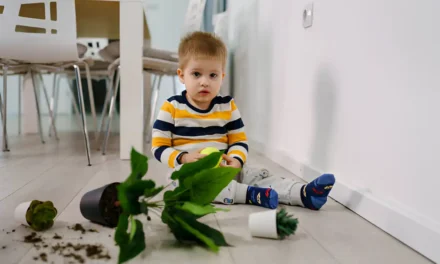As a parent, you understand the need to teach rules to your child. But making these lessons stick is the real challenge. That’s where repetition comes in. It’s the key to making learning last and helping your child follow the rules you set.
In this article, we’ll look at the four main benefits of using repetition to teach rules to kids.
Key Takeaways
- Repetition strengthens memory retention and the ability to recall information1
- Repeated practice helps build neural connections for faster and more efficient processing1
- Repetition boosts confidence in recalling and mastering skills or concepts1
- Spaced-out repetition can double the speed of learning and combat the forgetting curve1
- Repetition of rules and guidelines creates a sense of security and stability for children2
The Importance of Repetition
Repetition is key to learning and mastering new skills. Zig Ziglar, a famous motivational speaker, said, “Repetition is the mother of learning, the father of action, which makes it the architect of accomplishment.” This powerful quote highlights how crucial repetition is for learning, especially for kids.
Remember learning to ride a bike, drive, or play a sport? It all starts with learning the basics and then practicing a lot. This practice boosts your confidence and skill level. So, when your child wants to read the same book or play the same game again, it’s a good sign! Repetition helps kids master new skills, get better at them, and feel more confident3.
- Repetition is key for effective communication. People tend to forget things unless they’re reminded often4.
- Even if kids, employees, or students seem annoyed by repeated instructions, it’s vital for learning4.
- Repetition helps fight forgetfulness and distractions, keeping people focused on their goals4.
Good communication means being able to recall messages clearly after hearing them many times. This shows how important repetition is for sharing important info4. The saying “Train up a child in the way he should go, and when he is old he will not depart from it” (Proverbs 22:6) stresses the need for consistent repetition in teaching kids values and habits4. Personal stories, like remembering a scary experience from childhood, show how repeated messages can stick with us for years4.
Being consistent with repetition leaves a lasting impact. On the other hand, new things are often forgotten quickly. This shows why sticking to a consistent communication plan is so important4.
Repetition Fosters Learning
Repetition is key in learning, helping to make knowledge stick and strengthen brain connections. It boosts knowledge retention in students, making it easier to remember and use what they’ve learned5. Regular practice through repetition helps students get better at different subjects, leading to better grades5. This process helps them understand complex ideas, use them in real life, and think more deeply5.
The brain loves repetition because it makes learning faster and more efficient6. Spaced repetition is especially good for kids, helping them keep important knowledge for a long time6. It also helps with sequencing and growing vocabulary in language, and with solving math problems6. Repetition helps kids apply what they’ve learned to new situations, leading to deeper understanding6.
By going over what they’ve learned, students become more confident and self-sufficient5. It might seem like you’re covering the same ground over and over, but each time, you learn something new and deepen your understanding. In the end, repetition is what lets students grasp new ideas and remember them easily.
“Repetition is the mother of learning, the father of action, which makes it the architect of accomplishment.” – Zig Ziglar
Repetition Builds Confidence
Confidence is something we can learn and practice every day7. By repeating new skills, kids get better at them7. Being confident is key in many areas of life, and it makes us more successful and happy7.
Setting goals helps us move forward step by step7. People who are confident are also resilient and can bounce back from setbacks7. Trying new things without fear helps build confidence, as mistakes teach us and help us grow7. Taking action proves our abilities and repetition helps us master skills7.
Debbie Millman said, “Practice makes perfect and tells your inner self you can do it.”8 Confidence grows with repetition, where we feel accomplished after each small success8. This makes us feel good about our creative work and keeps us doing it8.
Repetition is key in building confidence and improving skills8. It takes time and courage to become confident, with many attempts before success8. Courage is vital for trying new things and facing our fears8.
Learning to ride a bike often takes many tries, but each attempt makes us better9. Confidence grows with repetition, helping us predict outcomes9. To master a skill or reach a goal, we must keep practicing until it feels natural9. Being open-minded and willing to take risks helps us learn from mistakes through repetition9.
In conclusion, Repetition Builds Confidence and Practice Makes Perfect. By practicing regularly and embracing failure, we can build the self-confidence and resilience needed to succeed in life.
Repetition Reduces Stress
Repetition can make you feel happy and satisfied. You’ll feel good when you can remember most of what you read10. This feeling boosts serotonin, the body’s natural mood booster, easing tension. Doing repetitive tasks can also make you feel like you’re in control, even when things seem tough10.
Feeling stressed about exams or not getting new skills can be tough. But, repetitive actions and rituals can increase focus and reduce stress.10 For example, athletes often use repetition to calm their nerves before a game. This shows how repetition can lower anxiety and boost performance10.
| Repetition Reduces Stress | Positive Feelings from Repetition |
|---|---|
|
|
“Repetition is the mother of learning, the father of action, which makes it the architect of accomplishment.” – Zig Ziglar
By doing repetitive tasks, people can feel more in control and certain about things11. This can help lower stress and improve well-being. Activities like deep breathing, meditation, and yoga can also relax the body. They help improve sleep, boost energy, and enhance health12.
In summary, practicing repetitive behaviors and relaxation techniques can help manage stress and boost positive feelings. Adding self-care, like self-massage, can also help. It can reduce stress, ease pain, and relax muscles12.
Repetition Improves Focus
Repetition is a key to better focus and attention. Doing something over and over makes it a habit. This keeps your brain sharp and focused13. Spaced repetition, which involves revisiting information at set times, is especially good for sharpening focus14.
Following a spaced repetition schedule helps your brain remember things better. It gets used to the schedule, making it easier to remember information for a long time14. This routine helps your brain prepare for the next repetition, making learning faster and easier.
- Repeated actions become a habit, programming the brain to stay alert13.
- Spaced repetition follows a set schedule, allowing the brain to become accustomed to predetermined timings14.
- Predictable spaced repetition schedules make it easier for the brain to store information in long-term memory14.
Adding repetition and spaced repetition to your learning can greatly improve focus and attention. This leads to better retention and mastery of what you learn1314.
“Repetition is the mother of learning, the father of action, which makes it the architect of accomplishment.” – Zig Ziglar
| Benefit | Description |
|---|---|
| Improved Focus | Repeated actions become a habit, programming the brain to stay alert and engaged. |
| Enhanced Retention | Spaced repetition schedules make it easier for the brain to store information in long-term memory. |
| Increased Attentiveness | The brain becomes accustomed to the predetermined timings of spaced repetition, improving attention and understanding. |
Using repetition and spaced repetition in your learning can really help. It boosts focus, attention, and memory1314.
Repetition Accelerates Learning
Repeating concepts or activities can quickly teach you new information or a new skill15. It’s a natural way to make studied materials stick15. Studies show that practice or training is key for lasting learning15.
But, new research finds that learning through association might be better and last longer than just repetition15.
Spaced-out repetition fights the forgetting curve16. A study on 54 kids aged 6-9 found that differential learning improved dental health more than traditional methods16. Musicians and athletes show that perfect repetitions aren’t always the best way to learn16.
Differential learning encourages exploring different ways to learn, finding what works best for each person.16 It’s about making mistakes to discover the most effective learning path, not just perfecting it16.
Learning is a voluntary process that needs active participation and motivation15. Repetition is key to solidifying new math skills, as Smartick points out15.
“Repeating concepts or activities may quickly teach you new information or a new skill.”
Creating an efficient morning routine is vital for less stress and a positive start. Preparing the night before, waking up early, and making mornings fun can help. It also improves time management and meal prep, leading to more quality time together.
17 Learning face-scene pairs six times boosted hippocampus activity but weakened other areas17. Studies show better recognition after learning words and pairs three or six times17. Memory retention improved, especially within a week, after repeated learning17.
17 Theories suggest that repeated memories might become less dependent on the hippocampus over time17. But, other theories propose that repetition strengthens connections between items, keeping hippocampal activity high17.
Repetition Fosters Predictability
Creating routines and rituals is key for kids. Repetition helps them know what’s next and feel safe18. It lets them understand and enjoy things more18.
Repetition makes new things feel familiar. It boosts confidence and teaches important skills18.
Repetition builds strong brain paths in kids19. It makes them feel secure and more skilled19. It also helps them learn and grow19.
Children like what they know before they’re born20. Repetition helps them learn and get better at new things20. It helps their brains grow and remember things better20.
- Keep a daily routine with things they like.
- Read their favorite books and rhymes often.
- Let them do simple tasks they enjoy over and over.
- Give them a safe place to explore and learn.
- Be proud of their progress and effort.
By using Repetition Fosters Predictability and Repetition and Routines, you can make a caring space for your child to grow181920.
Repetition Aids Skill Mastery
Mastering a skill, like playing an instrument or cooking, needs regular practice. Repetition is the key to getting better in any field21. Babies start with billions of neurons, and repetition helps connect them21. It also helps in building both short-term and long-term memory in young children21.
Repeating words and songs helps a lot with language in early childhood21. Repetitive activities make a safe environment for babies and toddlers21. This helps them feel more confident in what they can do21.
Music classes with repetitive actions improve motor skills and coordination21. Songs with the same lyrics help with learning language21. These activities also boost cognitive skills like counting and memory.
21 It’s good to make daily routines include songs and activities over and over21. Using songs and activities that touch multiple senses is best22. A scenario at a staff meeting showed the value of repetition in learning22.
22 The 10-5-3-1 Mastery Plan was introduced for skill practice22. It means practicing a skill alone, with a peer, with a manager, and then in front of everyone22. The article talks about getting better by always trying to improve and challenge yourself22. It has been viewed over 3,482 times.
23 Most schools focus on seeing and hearing, but not on touching and doing23. Kinesthetic learning means doing something over and over to remember it23. It takes thousands of tries to really get it right and perform well without thinking.
23 Kinesthetic learners need to start early and practice a lot to get better23. They like moving, learning with their hands, and linking actions with words.
23 Subjects like sports and music need a hands-on approach23. This way, students can learn and remember skills better than just knowing facts23. Encouraging kids to repeat activities helps them learn and remember better.
| Skill Development | Repetition Aids Mastery |
|---|---|
| Music Performance | Thousands of repetitions and mental rehearsals to solidify techniques, ensuring skills retention and spontaneity in performance23. |
| Language Learning | Repetition of words, phrases, and songs in early childhood significantly benefits language development21. |
| Motor Skills | Repetitive activities in music classes contribute to developing motor skills and coordination in children21. |
| Cognitive Development | Repetition in music classes helps in cognitive skills development such as counting, sequencing, and memory21. |
“Repetition is the mother of learning, the father of action, which makes it the architect of accomplishment.” – Zig Ziglar
Repetition is key to mastering any skill, for kids and adults alike. By practicing regularly, people can become experts and feel confident in their abilities. Repetition is important for learning language, developing muscle memory, and turning knowledge into practical skills.
Repetition Enhances Time Management
Effective time management is key, and repetition is a strong tool for it. Breaking down learning or teaching into smaller parts makes it easier. Using spaced repetition makes it more efficient24.
Divide your content into smaller pieces. This lets you focus on what to review first. It helps you manage your time better and retain information24.
Spaced repetition boosts long-term memory over cramming24. It’s better for long-term recall than quick learning. Experts like Robert Bjork support this24.
The forgetting curve shows how we forget things over time. Active recall is key to keeping knowledge. Algorithms help find the best times for spaced repetition, making learning software like NEJM Knowledge+ effective24.
Adding spaced repetition to your learning or teaching boosts long-term memory24. Studies show it improves memory recall and learning results24.
Using Repetition Enhances Time Management and Spaced Repetition Improves Time Management optimizes your time. It helps you learn, retain, and apply new information better24.
Repetition in Multisensory Instruction
Learning for kids works best when they use more than one sense. Multisensory instruction is a teaching method that uses sight, sound, touch, and movement. Adding repetition to these activities helps kids remember and understand better.
The latest research shows that repetition is less important when teaching with multisensory methods25. A study found that just two repetitions were enough for L2 learners when taught with sensory methods25.
“The most effective way for children to learn is to engage the visual, auditory, kinesthetic and tactile pathways to the brain.”
Teachers who use multisensory learning know how important repetition is26. Research shows that even experienced readers need many exposures to learn new words. But with multisensory activities, all students can learn and remember better.
Combining repetition with multisensory teaching is a great way to help students learn deeply. As teachers keep finding new ways to teach, using repetition in a multisensory way is proving to be very effective272526.
Repetition in Reading Books
Repetition is key in learning, especially when reading with kids. Studies show it boosts language, thinking, feelings, and love for reading in young ones.
In “Dandy” by Ame Dyckman, “Hi, Daddy!” is said six times. “But Sweetie was there” is said four times. This offers many chances for fun interactions28. The fourth time “But Sweetie…” is said, it changes to “But Sweetie was ALWAYS there.” This keeps it interesting for young listeners28. The authors use colors to highlight “Hi, Daddy!” and “Bye, Daddy!” in the text. This helps young readers see the patterns28.
Kids often want to read the same book over and over. This is called “Frequency of Re-reading.”29 It makes them feel safe and helps them learn language, think better, and understand feelings29. Reading the same book together also strengthens the bond between parents and kids. It builds confidence and makes reading fun29.
Books like “Thank You, Omu!” by Oge Mora and “The Pout-Pout Fish” by Debora Diesen use repeated lines to keep young readers engaged28. Between 1.5 and 5 years old, kids’ brains grow fast. Repetition helps them learn words, remember things, understand language, and read better30.
It’s good to say yes to kids when they want to read the same book again. It makes them feel loved and helps their brain grow30. Asking kids to find things in the book, connect it to their life, and reading more books by the same author can make reading even better30.
In short, repeating words in books is very helpful for kids. It helps with language, thinking, feelings, and social skills. It also makes kids love reading more. By using repetition, caregivers can help kids grow and learn a lot.
Applying Repetition for Different Ages
Repetition is a key to learning, and it works for all ages. It’s especially helpful for infants, toddlers, and preschoolers. Using repetition in your teaching can lead to amazing results31.
For babies, turn daily tasks into learning moments. Use times like diapering and feeding to talk and sing. Try new activities or favorite ones from the website31.
Toddlers enjoy repeating actions. Remember, their brains are getting stronger with each repeat32. Let them repeat their favorite activities as much as they want31.
Preschoolers need more challenging activities. The At-Home Activities for them have three levels. Repetition helps them learn31.
Adjust your teaching to fit each age’s needs. This way, repetition can help with learning, confidence, and focus32.
The Montessori method values repetition in learning. It shows how to use different materials and repeat lessons. This helps children apply what they learn in real life31. Embracing repetition can unlock your child’s full learning potential32.
Conclusion
The power of repetition in teaching rules to kids is clear. It makes learning better by using quizzing and spaced reinforcement33. This method helps kids remember more and feel more confident33.
Repetition moves learning from the surface to deeper levels. It leads to deeper understanding and “aha” moments34. It makes learning faster and keeps information in your mind longer3334.
The Summary of Benefits of Repetition is clear. It strengthens memory, improves focus, lowers stress, and boosts confidence. These are key for success in learning.
By using repetition, you can reach your full potential. It leads to amazing results in your studies.
The Conclusion is simple: repetition is more than a teaching method. It’s a powerful way to learn that can change your educational journey. Start using repetition to unlock your full potential.
FAQ
What are the key benefits of repetition in teaching rules to kids?
Why is repetition important in learning?
How does repetition foster learning?
How does repetition build confidence?
How does repetition reduce stress?
How does repetition improve focus?
How does repetition accelerate learning?
How does repetition foster predictability?
How does repetition aid skill mastery?
How does repetition enhance time management?
How is repetition used in multisensory instruction?
How is repetition used in reading books?
How can repetition be applied for different age groups?
Source Links
- 9 Benefits of Repetition for Learning (Read This First!) | Iris Reading
- Why Repetition is Important with Children
- Importance of repetition in learning | The CPD Certification Service
- Say it again and again and again… the importance of repetition — Ben Smith
- The Power of Repetition in Education: What’s Repeated Gets Remembered and What’s Remembered Gets Repeated.
- Learn, Play, Repeat
- How to Build Confidence Through Repetition
- Confidence comes from repetition
- The Confidence Conundrum: Why Repetition Alone Isn’t Enough
- Why Repetitive Tasks Are Stress Relievers
- Repetitive behaviors are a way to relieve stress
- Relaxation Techniques for Stress Relief – HelpGuide.org
- Repetition enhances the effects of activated long-term memory
- Understanding Learning and Memory: The Neuroscience of Repetition — Gretchen Schmelzer
- Practice and Repetition as the Base of Learning – Smartick
- Evidence That Too Much Repetition and Consistency in Practice Could Potentially Hinder the Learning Process (WHAT?!)
- Effects of Repetition Learning on Associative Recognition Over Time: Role of the Hippocampus and Prefrontal Cortex
- The Power of Repetition in the Early Years | Famly
- The Power of Repetition in Childhood Learning: Insights from Leading Experts – Kong Academy | Empowering Kids Through Play
- “Let’s Do It Again!” Fort Myers SLP Explains Why Kids Love Repetition – Focus Therapy
- The Magic of Repetition – Music Bus
- Repetition: The Key to Mastery
- Don’t Underestimate the Power of Kinesthetic and Tactile Learning!
- Spaced Repetition: The Most Effective Way to Learn
- Vocabulary Repetition Following Multisensory Instruction Is Ineffective on L2 Sentence Comprehension: Evidence From the N400
- Back to Basics: The Value of Repetition
- Why Repetition is Important in Reading Instruction
- Why use repetition in picture books? — Nevin Mays Editorial
- The Magic of Repetition: Why Reading the Same Book is Okay
- Read it Again! Why Repetition Matters – Childrens Museum of Southern Minnesota
- Encouraging Repetition at Home
- Repetition and Child Development in Montessori Education
- How to Close Your Paper Without Sounding Repetitive
- How can you use repetition to create a memorable conclusion that inspires action?





